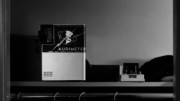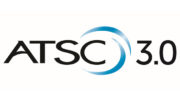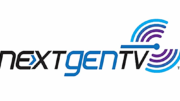Frequent readers of this blog know that I’ve got a lot of healthy skepticism when it comes to the so-called next-generation broadcast standard. There isn’t a lot of talk about it, even five years after it was first allowed to start testing in 2017. When you do read articles or news stories, they seem to always come from companies with a vested interest. Hey, let’s put all the cards on the table here. Solid Signal, parent of this blog, sells TV antennas. Yet, I try to keep a standard of honesty and integrity in everything I write. That’s what’s led me to some very critical stories about ATSC 3.0 in the past.
Here’s who Pearl TV is, and what they’re saying
I’ve reported on Pearl TV before. Back at the CES show, they came out publicly. It was one of the few true news pieces from that very quiet event. Pearl TV is a group of TV station owners. Let’s put that out on the table. They want to promote the idea of ATSC 3.0 because they think it will help them sell targeted ads. Regardless of their motivations, though, it’s good to see some sort of industry participation. Someone needs to put some juice behind this thing if it’s going to succeed. Sadly, neither the FCC nor the US Congress are likely to move quickly at this point on it.
The folks at Pearl TV are sure trying. They’ve announced a “Fast Track” program to try to help create converter boxes for ATSC 3.0. Right now there are only about 3 devices that will allow older TVs to use the new standard. All of them are pricey and none of them are terribly attractive from a consumer point of view. Ideally there could be something that looks like a “streaming stick” type product, perhaps even supported by the major smart TV operating systems. None of that exists now, and Pearl TV wants to change that.
But that’s where it gets a little hairy
Pearl TV’s press release makes some heady claims. The first is that ATSC 3.0 will reach 75% of US households by the end of next year. That’s technically true in that 75% of people will live where there are ATSC 3.0 broadcasts. However, the FCC estimates that currently only about 11% of TVs sold this year are capable of getting those broadcasts. Pearl TV, on the other hand, says 75% of TVs sold by 2024 will be ATSC 3.0 capable. That’s a pretty big gap and it’s hard to know where Pearl TV gets that ambitious projection from.
At the least, though, Pearl TV’s press release honestly gets the point across that those converter boxes don’t really exist, and that the few that do are at the wrong price point. The last time we all went through this exercise, the government offered $50 coupons for purchasing those boxes. Today that would equate out to about $75. The most popular box, from SiliconDust, goes for about $240. Hopefully Pearl TV’s efforts will change that.
Where we go from here
Here’s where we are at today. In June, 2022, the FCC formally asked for comments on the future of ATSC 3.0. They asked a lot of the questions that you or I would ask, like…
- When will 100% of TV markets be ready for ATSC 3.0?
- When will there be affordable hardware?
- Because there are patents involved, are they being used fairly?
There’s also a really big question being asked. The FCC’s order from 2017 expires in 2023. So what happens then? Right now, all ATSC 3.0 broadcasts have to be basically the same as ATSC 1.0 broadcasts. If the FCC allows ATSC 3.0 broadcasts to be different from ATSC 1.0 ones, that is a gigantic move and it’s potentially an illegal one. A core part of the law that governs TV broadcasting is that all TVs currently made must be able to decode all consumer TV signals. Period. It doesn’t say that old TVs have to work with new signals, but if the FCC allows this without 100% of new TVs having ATSC 3.0 tuners, that fundamentally breaks the law. And honestly, I think they know that. I mean, they’re the FCC, it’s their law.
If you read the Notice of Proposed Rulemaking, you’ll see that the FCC is asking a lot of the same questions you and I are. Now’s the time, because July 2023, when the current order expires, is coming up fast. To some degree, the FCC can make another rule that’s identical to the 2017 one, but does that serve the industry? I think there’s a lot of uncertainty about what the FCC could and should do at this point. I’m not a lawyer so I can’t go into the fine points. I do know eventually this is going to have to go before Congress and it’s hard to know how that’s going to shake out.
Here’s what you really need to know, today
Here’s the bottom line if you’re looking at this subject today. It’s really the only thing that’s important right now. All ATSC 3.0 broadcasts use the same broadcast frequencies as today’s ATSC 1.0 broadcasts. That means any antenna you buy today will continue to work when or if ATSC 3.0 becomes the law of the land. Simple as that.
Personally I would not hold off buying a new TV. I suspect it will be 18 months or more before inexpensive TVs with ATSC 3.0 tuners are out there. If you want a TV today, buy it. Also, I should point out that if you are not watching TV from an antenna today, none of this really affects you. Eventually, maybe, several years from now, it may mean more network shows are broadcast in 4K. Then, maybe, pay-TV companies will carry them. But I’m telling you that’s a long way away and you probably have other things to think about before then.





